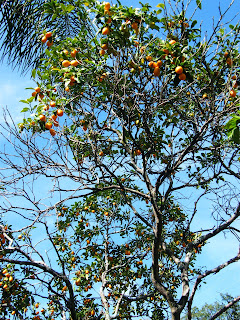WHAT TO PLANT IN FEBRUARY
FLOWERS: Annuals: Ageratum, Alyssum, Arctotis, Asters, Baby's Breath, Balsam, Begonia, Bracteantha, Browallia, Calendula, California Poppy, Carnation, Diascia, Dianthus, Dusty Miller, Foxglove, Gaillardia, Geranium, Lobelia, Marguerite Daisy, Nemesia, Ornamental Cabbage/Kale, Osteospermum, Pansy, Petunia, Snapdragon, Strawflower, Sunflower, Sweet Pea, Vinca, Viola
VEGETABLES: Beans, Beets, Broccoli, Cabbage, Cantaloupes, Carrots, Celery, Collards, Corn, Cucumber, Eggplant, Endive, Green Onions, Kohlrabi, Lettuce, Mustard, English Peas, Peppers, Potatoes, Pumpkin, Radish, Squash, Tomatoes, Turnips, Watermelon
HERBS and SPICES: Anise, Basil, Bay Laurel, Borage, Caraway, Cardamon, Chervil, Chives, Cilantro/Coriander, Dill, Fennel, Ginger, Horehound, Lemon Balm, Lovage, Marjoram, Mexican Tarragon, Mint, Nasturtium, Oregano, Rosemary, Sage, Savory, Thyme, Watercress.
BULBS: Achimenes, African Lily, Alstroemeria, Amaryllis, Amazon Lily, Aztec Lily, Blackberry Lily, Caladium, Calla, Canna, Crinum, Crocosmia, Dahlia, Gaillardia, Gladiolus, Gloriosa Lily, Hurricane Lily, Kaffir Lily, Lilies, Louisiana Iris, Morea, Rain Lilies, Society Garlic, Tiger Lily, Tritonia, Tuberose, Voodoo Lily, Walking Iris, Watsonia,
WHAT TO DO IN FEBRUARY
Plant or transplant cold hardy trees and shrubs. (See January )
Fertilize citrus trees if not done in January. (See January )
Fertilize annuals and vegetables. (See January )
Check Out Seed and Garden Catalogs. Most gardening catalogs arrive during the winter months. Check out the new varieties offered this year.
Prepare vegetable and flower gardens for spring planting. Till soil and add organic matter such as manure, compost or peat. Test pH of soil (Contact your county Cooperative Extension Service) and add lime or sulfur if necessary.
Prune, mulch and fertilize roses. Roses that are older than 1 year require a major pruning each year. Remove one-third to one-half of the top growth and any unproductive growth. Strip all leaves from remaining to rid plant of latent diseases and insects. Fertilize and mulch.
Prune grapes. Grapes should be pruned before leaves begin to sprout. Bunch grapes and Muscadine grapes each have different pruning requirements.
Control scab disease on citrus. Scab fungus causes light brown, corky areas on fruits and leaves of susceptible citrus varieties. Spray Murcott, Page, and Temple varieties with a copper fungicide when new growth emerges and again when 2/3 of petals has fallen from the flower blossoms.
Fertilize lawn and trees. Shop for a fertilizer that contains slow- or timed-release nitrogen. To determine the correct amount of fertilizer to use, simply divide the first number on the fertilizer bag (which represents nitrogen) into 100. Apply this amount per 1,000 square feet of lawn and landscape area. Broadcast the fertilizer over the soil or mulch and water. The nutrient and water absorbing roots of trees and shrubs are concentrated in the upper 6 to 12 inches of soil so there is no need to punch holes in the soil--simply water the fertilizer in.
Apply mulch to all plant beds. A 2-3 inch layer of mulch will discourage weeds and retain moisture in the soil.
Apply pre-emergent weed killer to lawn. Pre-emergent herbicides kill weed seeds as they germinate. Some fertilizers contain pre-emergent herbicide. Do not apply them near trees and shrubs or in areas where any seed will be planted. Carefully follow label directions.
Fertilize shrubs. A good lawn fertilizer such as 12-4-8 , or 15-5-15 or the like is usually adequate. Shop for a product with 30% to 50% of the nitrogen in a water-insoluble or slow-release form. Acid-loving plants (Azaleas, Hollies, Gardenias, Camellias, etc.) will benefit from an acid-forming balanced fertilizer such as 6-6-6 or 8-8-8 . Broadcast the fertilizer on the soil surface and water in.
Start vegetable and flowers from seed. Sow seeds in flats or pots in a light, sterile mix. Plant seed no deeper than twice the seed's thickness. Place in a sunny spot; keep warm and moist.
Watch new growth for aphid infestation. Aphids feed on the undersides of new, tender leaves causing curled, distorted growth. Most broad-spectrum insecticides easily control aphids, but soap solutions are effective as well. Mix 2½ tablespoons of liquid, dishwashing soap (do not use those containing a degreaser – use 1/3 less for concentrated soaps) in one gallon of water. Forceful sprays of water can dislodge aphids.




No comments:
Post a Comment